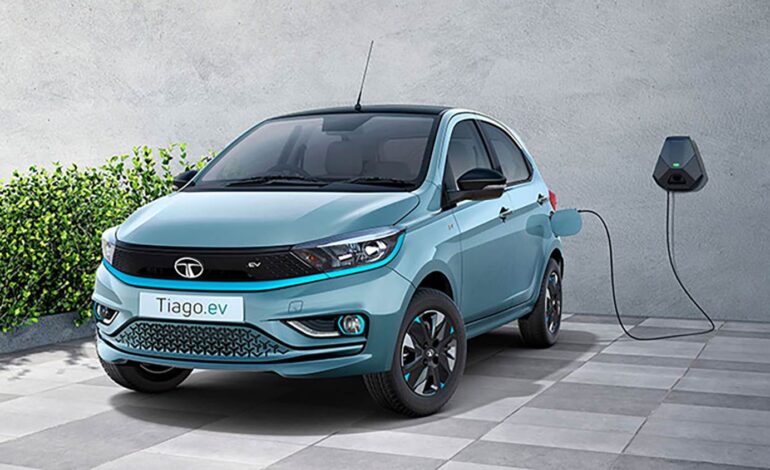India’s EV Revolution: Charging Ahead

The Rise of Electric Vehicles in India: A Comprehensive Overview
India is on the cusp of a significant automotive revolution, and at the heart of it lies the burgeoning electric vehicle (EV) market. For years, the Indian transportation sector has been heavily reliant on fossil fuels, contributing significantly to air pollution and greenhouse gas emissions. However, a confluence of factors – government initiatives, decreasing battery costs, and growing environmental awareness – are driving a rapid shift towards electric mobility. This post will delve into the current state of EVs in India, the key drivers behind their growth, the challenges that remain, and what the future holds for this exciting sector.
A Slow Start, Now Accelerating
The initial adoption of EVs in India was understandably slow. High upfront costs, limited charging infrastructure, and range anxiety were major deterrents for potential buyers. Early EVs were often perceived as expensive toys rather than practical transportation solutions. However, the landscape began to change dramatically around 2019-2020. The Indian government started to actively promote EV adoption through various policies and incentives, and battery technology began to improve, leading to lower costs and increased range.
Initially, the two-wheeler segment – scooters and motorcycles – led the charge. This was largely due to the shorter commute distances in many Indian cities and the relatively lower cost of electric two-wheelers compared to their petrol counterparts. Electric scooters quickly gained popularity, particularly among urban commuters looking for an affordable and eco-friendly mode of transport. The three-wheeler segment (e-rickshaws) also saw substantial growth, providing a livelihood for many and offering a cleaner alternative to traditional auto-rickshaws.
Government Initiatives Fueling the Growth
The Indian government has played a pivotal role in fostering the EV ecosystem. Key initiatives include:
- FAME India Scheme (Faster Adoption and Manufacturing of Electric Vehicles): This scheme provides financial incentives for the purchase of EVs, reducing their upfront cost. It’s been revised and expanded over time, with FAME II being particularly impactful.
- Production Linked Incentive (PLI) Scheme: This scheme aims to boost domestic manufacturing of EVs and their components, including advanced chemistry cell (ACC) batteries. This is crucial for reducing reliance on imports and building a self-reliant EV industry.
- State-Level Policies: Many state governments have introduced their own EV policies, offering additional subsidies, tax exemptions, and incentives for EV adoption and infrastructure development. States like Delhi, Maharashtra, and Gujarat have been particularly proactive.
- GST Reduction: The Goods and Services Tax (GST) on EVs has been reduced to 5% from 12%, making them more affordable.
These policies have created a favorable environment for both EV manufacturers and consumers, driving demand and encouraging investment in the sector.

The Expanding EV Landscape: Segments and Players
While two and three-wheelers currently dominate the EV market, other segments are also gaining traction:
Electric Two-Wheelers: Companies like Ola Electric, Ather Energy, TVS Motor Company, Bajaj Auto, and Hero Electric are leading the charge in this segment, offering a diverse range of scooters and motorcycles. Competition is fierce, leading to innovation and lower prices.
Electric Three-Wheelers: Mahindra Electric, Piaggio Vehicles, and Kinetic Green are key players in the e-rickshaw market. These vehicles are vital for last-mile connectivity and are increasingly being used for goods transportation.
Electric Cars: Tata Motors has emerged as the dominant player in the electric car segment with models like the Nexon EV and Tiago EV. Mahindra & Mahindra is also making significant strides with its XUV400. MG Motor India and Hyundai are also offering electric cars, but at a higher price point. The entry of more affordable electric cars is crucial for mass adoption.
Electric Buses: State transport undertakings (STUs) are gradually incorporating electric buses into their fleets, driven by government initiatives to reduce pollution in cities. Tata Motors, Ashok Leyland, and JBM Auto are major suppliers of electric buses.
Challenges Remain on the Road to Electrification
Despite the impressive growth, several challenges need to be addressed to ensure the sustainable development of the EV market in India:
Charging Infrastructure: The lack of adequate charging infrastructure remains a major concern. While the number of charging stations is increasing, it’s still far from sufficient to support the growing number of EVs. Expanding the charging network, particularly in Tier 2 and Tier 3 cities, is critical. Different charging standards and interoperability issues also need to be resolved.
Battery Costs and Supply Chain: Batteries account for a significant portion of the cost of an EV. Reducing battery costs through domestic manufacturing and technological advancements is essential. Securing a reliable and sustainable supply chain for battery materials is also crucial.
Range Anxiety: Concerns about the limited range of EVs and the availability of charging stations on long journeys continue to deter some potential buyers. Improving battery technology and increasing the charging infrastructure will help alleviate range anxiety.
Power Grid Capacity: The increased demand for electricity from EVs could strain the power grid. Investing in grid modernization and renewable energy sources is necessary to ensure a sustainable and reliable power supply.
Skill Development: A skilled workforce is needed to manufacture, service, and maintain EVs. Investing in training and skill development programs is essential.
The Future of EVs in India: A Bright Outlook
Despite the challenges, the future of EVs in India looks incredibly promising. Several trends suggest continued growth and innovation:
Falling Battery Prices: Battery prices are expected to continue to decline in the coming years, making EVs more affordable.
Technological Advancements: Ongoing research and development are leading to improvements in battery technology, range, and charging speeds.
Increased Government Support: The government is likely to continue to support EV adoption through policies and incentives.
Growing Consumer Awareness: Increasing awareness about the environmental and economic benefits of EVs is driving demand.
Localization of Manufacturing: The PLI scheme and other initiatives are encouraging domestic manufacturing of EVs and their components, reducing reliance on imports.
Emerging Business Models: Innovative business models, such as battery swapping and EV-as-a-service, are emerging to address some of the challenges associated with EV adoption.
By 2030, many experts predict that EVs could account for 30-40% of new vehicle sales in India. This transition will not only reduce pollution and greenhouse gas emissions but also create new economic opportunities and enhance energy security. The road to electrification may have its bumps, but India is firmly on the path towards a cleaner, greener, and more sustainable transportation future.



